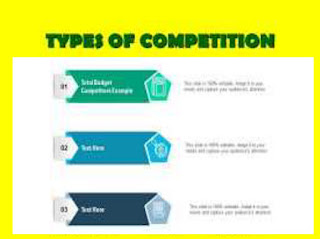Budget Competition Demystified: How to Outshine Your Rivals

When developing and marketing a product or service, businesses carefully assess the competitive landscape within their target market. The presence of competing products significantly influences a company's marketing strategies, pricing decisions, and production plans. A keen understanding of budget competition is instrumental in shaping effective marketing and sales strategies to sway customers towards choosing your offering. In this article, we delve into the concept of budget competition, highlight its importance, offer illustrative examples, and categorize the various types of competition. What is Budget Competition? Budget competition refers to the dynamic wherein a primary product vies for a share of a consumer's budget amidst other similar products in the market. Delving into budget competition aids in making informed choices regarding pricing structures, packaging designs, and advertising campaigns for a company's product. It's worth noting that products involve...



